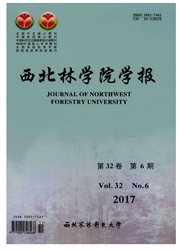

 中文摘要:
中文摘要:
选择北京市玉渊潭公园6种不同下垫面作为研究对象,进行了不同下垫面四季温湿效益的研究。每天8:00—18:00,每2h分别对6种下垫面的温度、相对湿度进行同步测定1次,春、夏、秋、冬各季分别连续测定7d。结果表明:城市中的绿地和水体具有明显的微气候效应。绿地夏季的降温增湿效果最明显,其次为春、秋季,冬季的温湿效益最小。在春、夏、秋季,绿地具有降温作用,在冬季,绿地具有保温作用。夏季,水体下垫面的降温作用比较明显,仅次于乔灌草下垫面,其降温值远高于其他类型的下垫面。夏季绿地比铺装温度低0.8~4.1℃。不同类型下垫面春、夏、冬季的相对湿度高低趋势一致,均为:水体〉乔灌草〉灌草〉草坪〉铺装〉建筑,秋季为:灌草〉乔灌草〉水体〉草坪〉铺装〉建筑。夏季水体比建筑的相对湿度高10.2%~15.4%。
 英文摘要:
英文摘要:
Six kinds of underlying surfaces were selected at Yuyuantan Park in Beijing to study their impacts on temperature and humidity. The temperature and relative humidity were measured once every two hours from 8:00 to 18 :00 every day for seven days in each season. The results indicated that urban greening land and water body demonstrated microclimatic effects. The effects of decreasing the temperature and increas- ing the humidity of the greening lands were most remarkable in summer, then in spring and autumn, and least in winter. The greening land decreased the temperature in spring, summer and autumn while increased the temperature in cold winter. The decreasing temperature effect of water body was distinctive in summer whose temperature was lower than those of other underlying surfaces. Compared with pavement, the green- ing land could decrease the temperature ranging from 0.8 to 4.1℃ in summer. Similar variation patterns of different surfaces in the relative humidity were observed in spring, summer, and winter, i. e. , water body grassY〉arbor shrub grass grass?shrub-grass〉pavement〉building, while the order was shrub grass)ar- bor-shrub-grass)water body〉 pavement〉 building in autumn. Compared with building, the water body could increase the relative humidity by 10.2%-15.4% in summer.
 同期刊论文项目
同期刊论文项目
 同项目期刊论文
同项目期刊论文
 期刊信息
期刊信息
